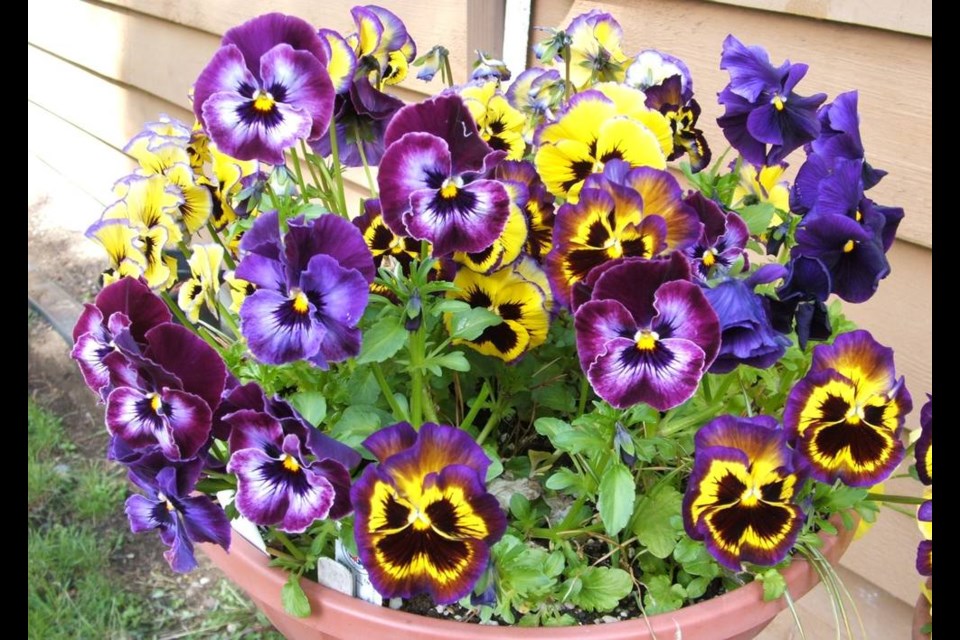It won’t be long before the 2021 seed catalogues begin arriving, and online sources have their new roster of varieties listed.
At about this time every autumn, I pull out the bag of leftover seeds I keep in a cool cupboard next to the north-facing wall of my home, and list all the ones I plan to grow again this year.
I use a notebook to list the seeds on hand by the month of sowing. That’s how I store the seeds too, in envelopes by their seeding month. Items that are sown more than once, like endive and pansies, are moved to the envelope for the next month of seeding once the first sowing is done.
An example: I aim to sow pansies and violas in late January, for transplanting in March into shallow patio planters. Seeds left from that early indoor sowing are moved to the July envelope. I sow pansies and violas again around mid-July for September planting into patio containers.
Because most lettuces are sown in regular succession from late winter through July, I keep them in their own separate envelope. Within the envelope I use paper clips or elastic bands to hold together the different types of lettuce: leaf, butterhead, romaine.
As I list the seeds on hand, I note on a “shopping list” items that I need to buy. Uppermost in mind is to check on the seeds I have left for plants I consider essential. These will be different for everyone — the flowers and food plants that a gardener would not want to be without.
For me, “must-have” plantings include carrots, shelling peas, onions, tomatoes, kale and zucchini. For flowers, the garden would seem bereft without calendula and nasturtium, larkspur, alyssum, snapdragons and signet marigolds. Fragrant petunias blooming in summer’s warmth on the patio next to the screened door have become a pleasing habit.
Seed longevity. Every packet of seeds has the year of purchase written on it. This is important, because some seeds do not retain their viability for long. Though most seeds will stay viable for at least three years if kept uniformly cool and dry, some should be kept over for only one year, to be sown just in a second year. Examples are onion, leek, parsnip, columbine, aster, and impatiens.
I’ve learned the hard way that pelleted seeds do not last well for planting a second year. Apparently the pelleting process reduces seed longevity.
Pruning perils. The next time I climb up and down ladders to prune trees and vines for more than a couple of hours at a time, I hope that some rational person comes along to beat me about the head and shoulders with a fern frond for my foolishness.
A few weeks ago, at the end of a day spent sawing and clipping in rampant plants, I missed the bottom rung of the ladder coming down and pitched backward, to land on the cement driveway with a loud crack as the back of my head met the hard surface. I somehow sprained the right thumb in the process, making lifting and holding almost anything an interesting challenge.
Please don’t do that. Set a timer. Stop before the point of exhaustion. Don’t be silly. Like me.
Mixing It Up 2021. “Roots, Shoots and Leaves” is the theme of the virtual Mixing It Up in the Urban Garden Conference on Saturday, Jan. 30, 9 a.m. to 4 p.m. The day will include five speakers, connections with vendors, gardeners’ chat rooms, Victoria Master Gardeners’ silent auction and more. The speakers and their topics:
* Richie Steffen, director of the Elisabeth C. Miller Botanical Garden in Seattle: Plant Picks For Our Changing Climate.
* Dr. Linda Gilkeson, entomologist, writer and teacher: Addressing Climate Change from the Roots Up.
* Ron Carter, arborist and instructor: Trees Now and Forever.
* Bianca Bodley, landscape designer and owner of Biophilia Design Collective: No Yard? No Problem! — Gardening in Small Spaces.
* Dr. Drew Zwart, plant pathologist and physiologist: If Leaves Could Talk: Want to know what’s best for your plants? Listen to their Leaves.
Registration is open now at Mixingitup.org. Early Bird price until Oct. 31 is $40. After that the cost will be $55. Zoom coaching will be available before the conference Full details on the talks can be found on the site.



